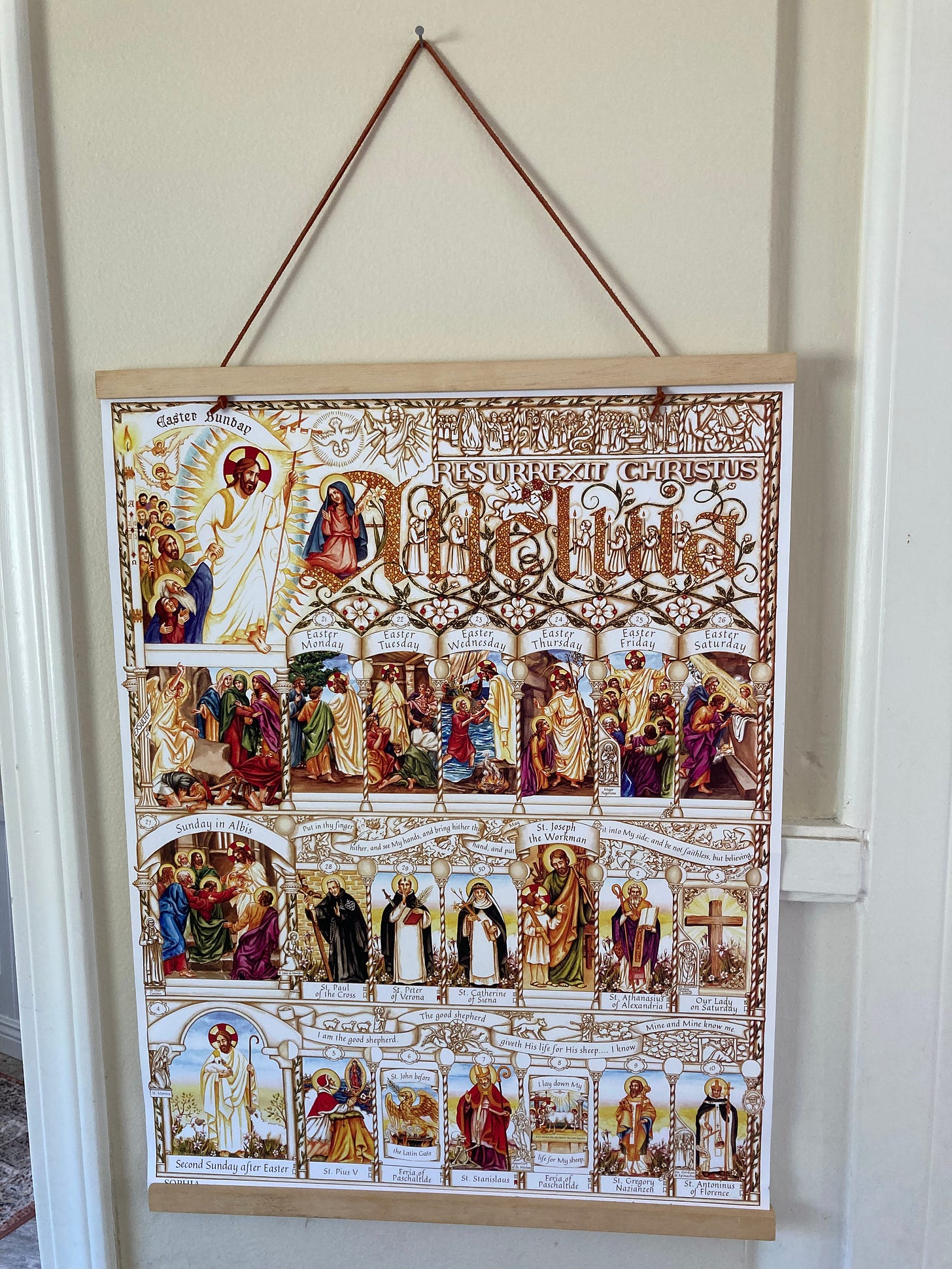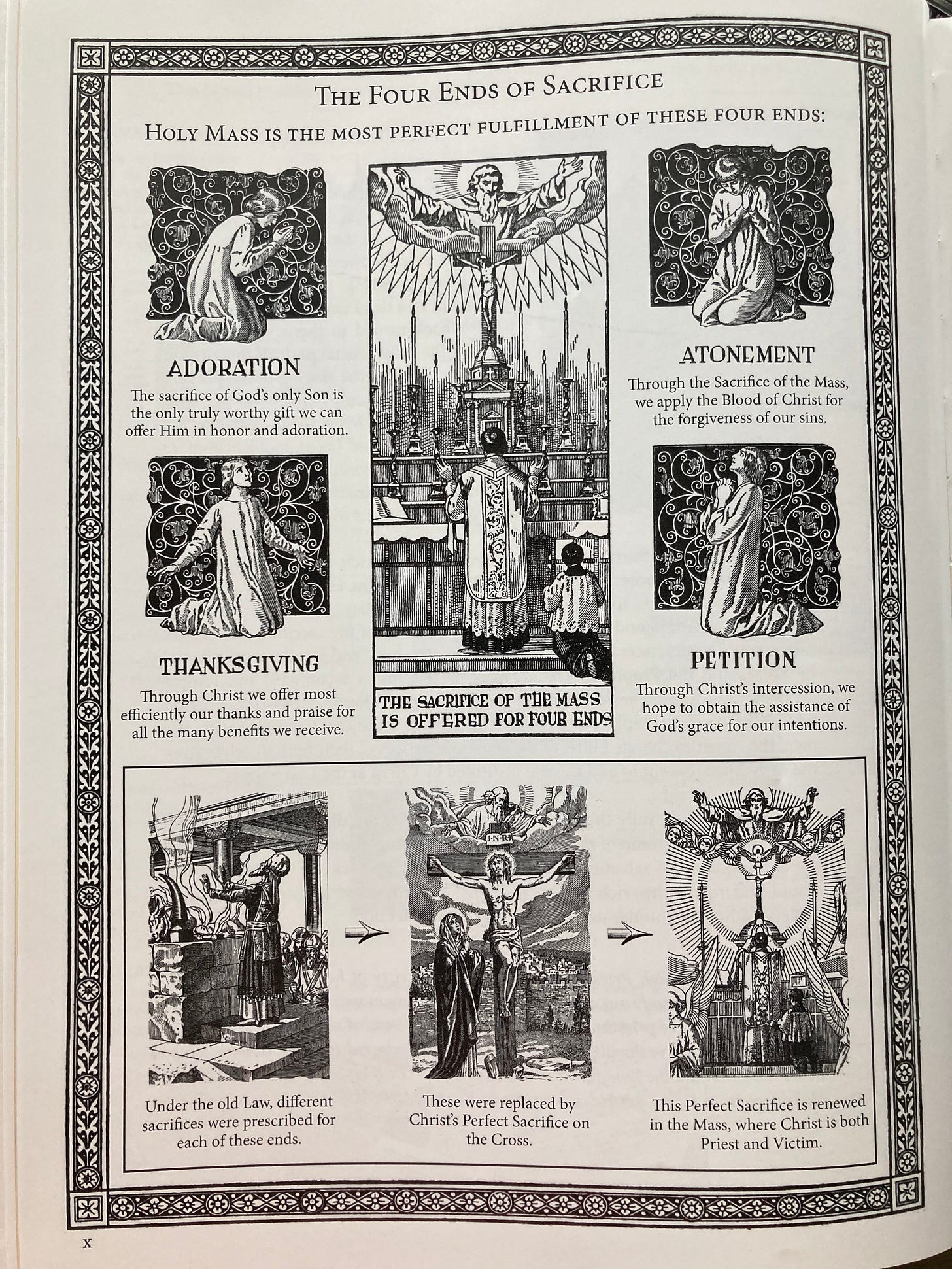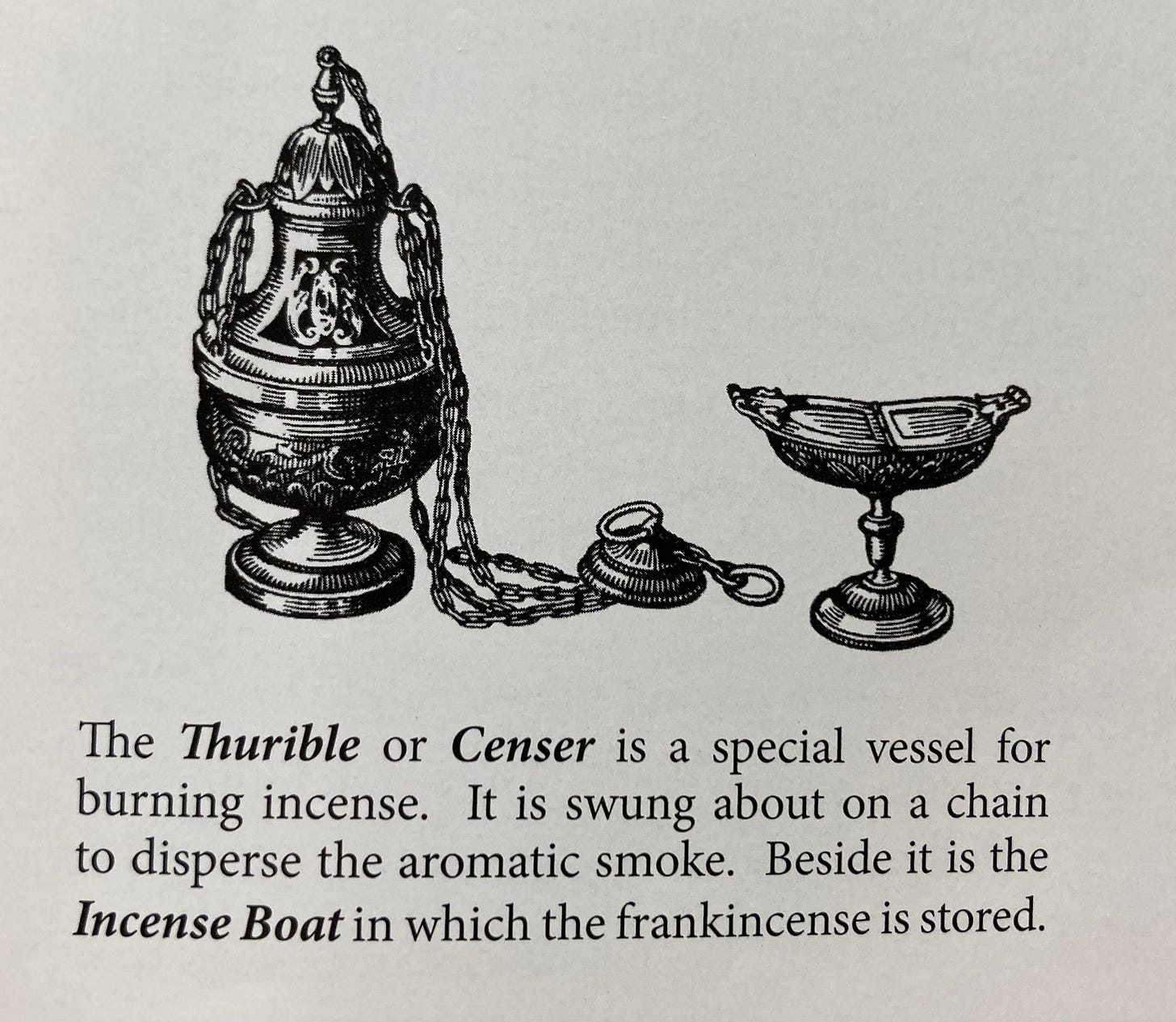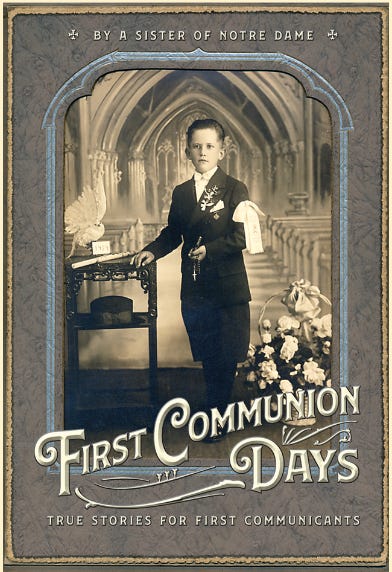Bracketed Christianity has been the undoing of entire generations post Vatican II. Mass-on-Sundays Catholicism, like a single needle squished in the haystack of the week, has failed to pass on the faith in the West. Even with the added perfunctory First Communion class for a year or two, children in mainstream Catholicism are not being shown the immense riches of the faith.
I recall when my first child was born panicking about how to bring him up so that he would remain Catholic. The anemic Catholic community at our local Novus Ordo parish seemed like it could do little more than check our Sunday obligation box. I felt overwhelmed wondering how I could keep the culture out and put Christianity in. It felt like something I was going to have to accomplish more or less alone with my husband. I was daunted.
A friend recommended Kendra Tierney’s popular book The Catholic All Year Compendium. This was my first foray into the concept of “liturgical living,” and I devoured it eagerly. I am grateful to Mrs. Tierney for introducing me to the idea of Advent as a waiting period before Christmas, and that Christmas and Easter are entire seasons! I tried to bake and craft and color many feast days in order to bring to life our faith. Then I became pregnant, sick, and exhausted, and all of the crafting and baking engulfed me as I tried to keep track of which baked goods honor which saint, and pleaded with my printer to give me one last round of coloring pages before I died of liturgical living overwhelm.
It was around this time that we’d had enough of our Novus Ordo parish and sought out a traditional Latin Mass. This complicated things with Tierney’s book, which follows the new calendar. It was just as well because I’d about given up on this liturgical living thing, which had begun to feel forced.
Yet my husband and I began to fall in love with the traditional Mass, and we deepened our faith and our understanding of the Mass immensely just by going every Sunday, even with fussy babies and toddlers in tow. I started to suspect that if we committed to the TLM, there would be less Russian roulette involved in our children’s spiritual futures.
We started to learn, read, and really experience the Mass for the first time in our lives, even though we are both cradle Catholics. We started observing some feast days, fasting (well, my husband fasted), and being more careful about which Catholic children’s books we had in our home. Over time, things began to fall into place. It seemed that, without really realizing it, we had begun in small ways to “live liturgically.”
This second round of liturgical living happened organically, and it centered around and was informed by the actual liturgy of the old Mass. This happened because the rituals, prayers, order, rhythm, and hymns of the traditional Mass have their own power and way of catechizing.
The Mass acted as the center of gravity that was missing from my first attempt at “liturgical living,” which felt more like LARPing than being in harmony with the order of the Church’s liturgical year and rhythms. We would pick, almost at random, saints feast days to bake for and craft for, and then choose something that, on the level of reason, “fit” with the saint, such as angel food cake on the feast day of St. Michael the Archangel. My yearning for tradition, however, was not satisfied.
Simply attaching ourselves to the traditional Latin Mass introduced us to the old practices that had served faithful Catholics for centuries. It immersed us in liturgical living in a way that no books or guides could.
Our children going through First Communion classes with our priest, who is from the Fraternity of St. Peter, have deepened our understanding of the faith immensely. Much of this class is about the Mass and its symbolism and meaning. So much of the catechism organically builds out from there.
Father is using the same book for the children in First Communion as he is for his RCIA students: Treasure and Tradition by Lisa Bergman. Last year he had assigned the New St. Joseph Baltimore Catechism, but as he pointed out, we aren’t in the 1950s, and this book can seem rather stiff.
Full of richly-colored illustrations and photos, Treasure and Tradition gives both an outline and important details about the traditional Latin Mass, and it is catechizing our whole family.
At first glance, it would seem to be way beyond the inexperienced mind of a 6-year-old, but as Charlotte Mason well knew, children are capable of a great deal. The beauty of this book is that it is layered, and something we can continue to return to.
Children pick up what they can. But they sense that they are being initiated into something serious and meaningful because of the book’s seriousness and beauty. It seems to be a show of respect to little children to treat them as if they are capable of more than a cartoon or Lego catechism. In a world of utter unseriousness, this book (alongside the traditional Mass) is a welcomed refuge of seriousness.
In addition to this, something that has helped to catechize our family and to “live liturgically” has been the Illustrated Liturgical Year Calendars. They are done by the incredibly talented homeschooling mother Michaela Harrison and published by Sophia Institute Press. Every three months we receive a roll of new calendars in the mail. It is hung in our dining room at a level at which the toddler can’t rip it down yet the older children can view it close to eye level.

It makes it easy to keep track of saint’s feast days, liturgical seasons, days of fasting and abstinence, Ember Days, and other traditional observances that were lost after Vatican II. What’s more, the illustrations are so beautiful and richly symbolic that they lead us into a deeper understanding of the faith.
Steeped in the liturgical awareness and knowledge of Dom Guéranger and his work The Liturgical Year, Harrison does not overlook any detail in her illustrations. Fortunately, each package comes with a guide that explains the symbolism and some of the highlights of that liturgical season. Over the years we pick up on more and more.
Whenever a new calendar is put up, we first lay it on the floor or the table and the kids stare intently at it, taking in all of those little details. Their questions help me to deepen my own understanding. Every Sunday we can see at a glance what the gospel is. A picture is truly worth a thousand words. These beautiful, illuminated illustrations reflect the rich, inexhaustible beauty of the faith. What a support this has been for us as we’ve learned the traditional calendar and practices.
When it’s time to change the calendar, the kids cut out all of the saints from the old calendar and put them in our big saint bag. On All Saints Day, we will shake it up and everyone will draw a saint who they will get to know for the following year.
Finally, I want to mention a little gem that I discovered from the St. Augustine Academy Press, which also publishes Treasure and Tradition and was started by homeschooling mother and author of that book, Lisa Bergman. This press is bringing to life all sorts of out-of-print books that used to be used widely to catechize and educate children prior to the great simplification of Vatican II. One such book is called First Communion Days: True Stories for First Communicants by a Sister of Notre Dame.
The stories are poignant tales, only 3-5 pages, of little children on their path to First Holy Communion. They are varied, interesting, and alive. In one story, a little boy’s faith converts his parents; in another story, the little boy’s faith gets him kicked out of his home. Some children die young, yet this is presented in the most Christian of ways, allowing children to see the holy heroism of their peers. I read this to my soon-to-be six-year-old as part of his catechism. It really shapes the imagination concretely.
All of these catechetical resources that I’ve mentioned involve the “active participation” of the children (and adults) in their learning. Interesting tales, detailed images of the Mass, and richly illustrated paintings steep us in the liturgical year in a way that it lives in us. Like our native tongue, we pass it on without thinking. No extravagant recipes or printers required.
Children are “creators” in their own catechesis as their imaginations concretely incorporate the meaning of the faith. The faith is not beaten in to them through rote memorization or box-checking obligations.
One wonders how homeschooling mothers of multiple children could have time to start presses and illuminate liturgical calendars. However, it seems to be because of their children that they are able to move mountains. Their love of Christ and their desire to pass on the Catholic faith to their children drove them to fill the lacuna in resources for traditional catechesis. God bless them. Now we can all benefit from their herculean labors.











This could be me. It sounds like my story. Wow.
I taught Sunday School a decade and a half ago at a modern American Southern parish, and always tried to weave in feast day celebrations and customs (with the coloring pages!), into the lessons. And I further worked to get a group started for families to meet monthly on a special feast and to first pray together in the church, and then celebrate in the social hall or outside. All that went nowhere, fast. Admittedly, my awkward and introverted personality hampered my efforts, but I now also know that nothing meaningfully traditional can stick around the Novus Ordo Missae. And I now believe that the NOM was designed by diabolically intelligent forces to repel and destroy Catholic piety, tradition, and the Faith itself.
But happily, I have found that the TLM is like a live socket. Whoo! It takes maybe just a year or two of immersion in it to feel joyfully overwhelmed with an unbroken connection to the glories of the past, to the saints, to everything you tried to believe about God in the vernacular Mass but it felt like walls had somehow been put up around you. It's so good to be connected to that Tradition. And my favorite part is--that the TLM is all my 9 y o daughter has ever known. Deo gratias!
The Illustrated Liturgical Year Membership (which the Harrisons will discount if you subscribe to the calendar through Sophia) also includes monthly dedication hymns, translated into English, set in square notes, and accompanied by audio recordings to help you learn the hymns. Another great way to steep your family in Catholic tradition, especially if you’re even moderately musically inclined.
https://www.liturgyofthehome.com/purchase-a-membership